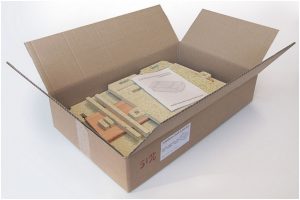
Improving safety in packaging with RFID tags
Food safety matters. Nobody wants to have to worry that their weekly shop might land them with a trip to their local hospital, or worse. Fortunately, cases of unsafe food reaching the shelves are rare in the developed world today and now technology that has previously been used to prevent shoplifting is working with your smartphone to help make them even rarer.
What are RFID tags?
RFID (radio frequency identification) tags are the little devices that many stores use to detect when something is being removed from the shop without paying – the small tags that the shop assistant removes when you pay. They are also utilised by your smartphone to perform NFC (near field communication). There are some technical differences between the two; however, by combining the technologies and including RFID tags in packaging, it is hoped that consumers will be able to use their smartphones to ‘talk to’ food packaging.
How will this help?
Food safety researchers hope that there are several ways in which these technologies can work together to improve food safety:
– Temperature and storage tracking. Consumers would be able to scan the tag on the packaging to verify that the food product has been correctly stored at the right temperature, such as frozen or chilled, before they make the decision to purchase.
– ‘Use-by’ and ‘best-before’ dates. It is not unknown for less-than-honest retailers to ‘edit’ the use-by dates of the products on their shelves. This technology would enable consumers to check the original date on the RFID tag, effectively making this kind of fraud impossible.
– Origin tracking. Do you remember the horse-meat scandal? Using RFID technology to track food shipments and end products would reduce opportunities for unscrupulous companies to commit such crimes again.
Can it be done?
Yes, the technology to include RFID tags in packaging already exists. Packaging machines do this day in, day out in many other industries, such as in DVD and video game boxes and computer component cases, where they are used to track items through the manufacturing process and to prevent theft. To introduce this technology into packaging machines used in the food industry should be very simple and could happen – in industrial terms – almost overnight.
In short, this would be a quick win for consumers, regulators and the industry alike.

Leave a reply